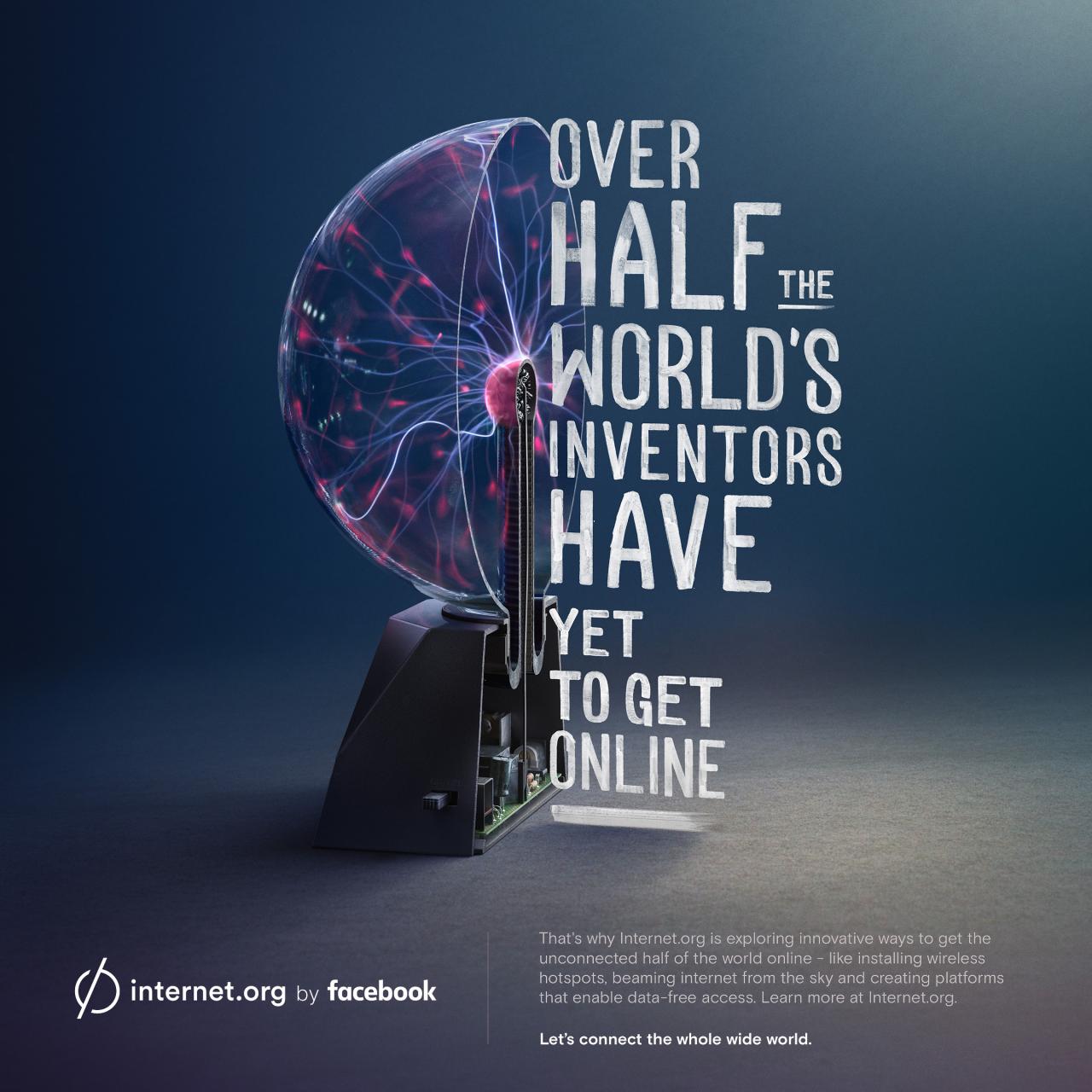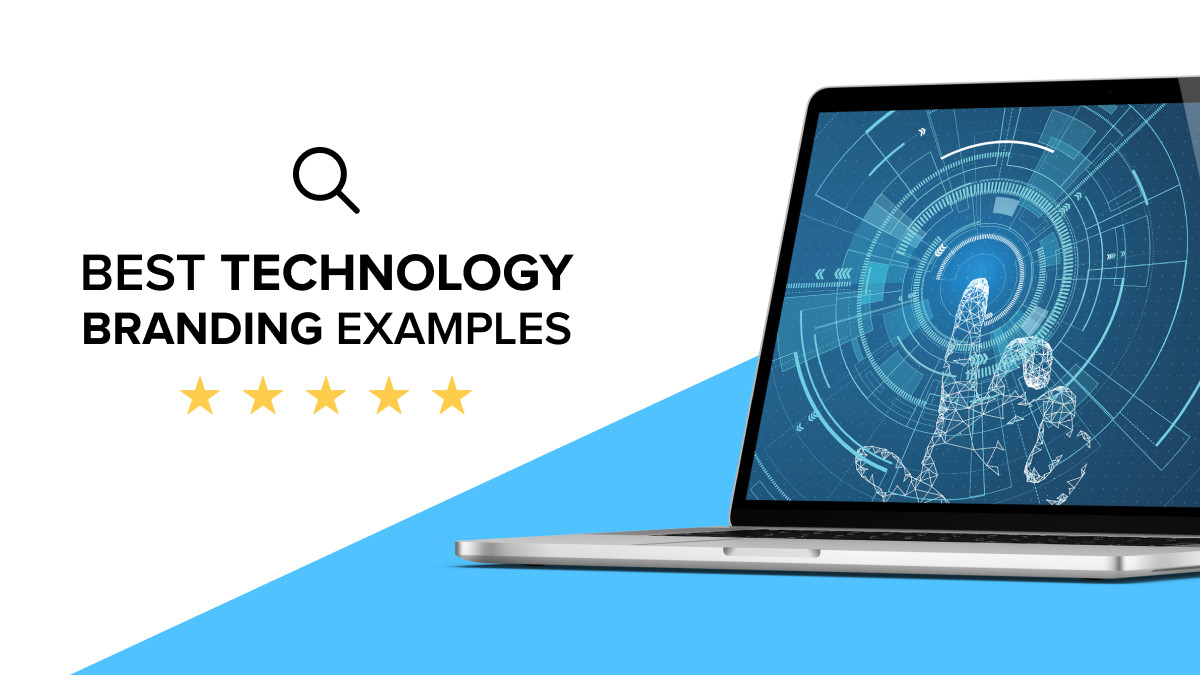Technology Adverts: A Look at the Past, Present, and Future
Technology adverts have evolved significantly, from simple print ads to sophisticated digital campaigns. They have become increasingly sophisticated, utilizing various techniques to captivate audiences and drive sales. This exploration delves […]

Technology adverts have evolved significantly, from simple print ads to sophisticated digital campaigns. They have become increasingly sophisticated, utilizing various techniques to captivate audiences and drive sales.
This exploration delves into the history, key elements, targeting strategies, and ethical considerations surrounding technology adverts. It examines how technological advancements have transformed the advertising landscape and explores future trends in this dynamic field.
Evolution of Technology Adverts

Technology advertising has undergone a dramatic transformation, mirroring the rapid evolution of technology itself. From simple print ads to immersive digital experiences, the way we promote technological innovations has evolved significantly, driven by changing consumer behaviors, advancements in advertising technology, and the ever-increasing complexity of the products being marketed.
Early Technology Adverts
Early technology adverts, often found in print publications and on billboards, were characterized by a focus on functionality and innovation. These ads typically showcased the technical specifications of the product, emphasizing its novelty and practical benefits.
- For instance, a 1950s advertisement for a new transistor radio might highlight its portability and ability to receive clear radio signals.
- Similarly, early computer ads emphasized the speed and processing power of the machines, targeting businesses and institutions.
The visual style of these early ads was often simple and straightforward, featuring black and white images or illustrations of the product. The copy was typically factual and informative, aiming to educate consumers about the new technology.
Modern Technology Adverts
Modern technology adverts, however, take a different approach. They are highly visual, often featuring stunning graphics, animations, and even virtual reality experiences. The focus has shifted from functionality to lifestyle and emotional appeal.
- Smartphones, for example, are no longer marketed solely on their technical specifications but are presented as tools for connecting with loved ones, capturing memories, and enhancing productivity.
- Advertisers leverage storytelling and emotional resonance to create a connection with consumers, portraying technology as a means to achieve personal aspirations and improve quality of life.
Modern technology adverts also utilize sophisticated targeting strategies, leveraging data analytics to reach specific demographics and interest groups. This allows advertisers to tailor their messages and visuals to resonate with the unique needs and preferences of their target audience.
Technological Advancements and Advertising
Technological advancements have significantly influenced the design and effectiveness of technology adverts. The rise of the internet and social media has opened up new avenues for advertising, enabling targeted campaigns and interactive experiences.
- Online video advertising, for instance, allows advertisers to create engaging and immersive content that can reach a global audience.
- Social media platforms provide opportunities for user-generated content and influencer marketing, allowing brands to connect with consumers in a more authentic and engaging way.
The development of artificial intelligence (AI) has further revolutionized advertising, enabling personalized content recommendations, dynamic pricing strategies, and automated ad campaigns. These advancements have empowered advertisers to create more relevant and effective campaigns, while also providing consumers with a more personalized and engaging advertising experience.
Key Elements of Technology Adverts

Technology adverts are designed to capture attention, generate interest, and ultimately persuade consumers to purchase a product or service. To achieve this, advertisers employ a variety of elements that work together to create a compelling message.
Visual Appeal
Visual appeal is crucial in technology adverts, as it often serves as the initial point of contact with the audience. Striking visuals can instantly grab attention and convey the product’s features and benefits.
- High-quality images and videos: Modern technology adverts often feature high-resolution images and videos that showcase the product’s sleek design, advanced functionality, and user experience. This visual quality helps create a sense of sophistication and desirability. For example, an advertisement for a new smartphone might feature close-up shots of its vibrant display, powerful camera, and intuitive interface.
- Dynamic animations and effects: Animations and special effects can further enhance the visual appeal and engage the audience. They can bring static images to life, demonstrate product features in an interactive way, and create a sense of excitement and anticipation. For instance, an advert for a gaming console might use dynamic animations to showcase the immersive gameplay experience and high-definition graphics.
- Strategic use of color: Colors play a significant role in conveying emotions and associations. Advertisers carefully choose colors that align with the product’s brand identity and target audience. For example, a tech company known for its innovative and futuristic products might use bright, bold colors, while a company focusing on simplicity and elegance might opt for a more minimalist color palette.
Persuasive Language
Persuasive language is essential for communicating the product’s value proposition and convincing the audience of its benefits.
- Clear and concise messaging: Advertisers strive to convey their message in a clear, concise, and easy-to-understand manner. This ensures that the audience can quickly grasp the key selling points and benefits of the product. For example, an advertisement for a cloud storage service might use the tagline “Store your memories, free your device,” which clearly highlights the product’s main benefit.
- Benefit-driven language: Technology adverts often focus on the benefits the product offers rather than its technical specifications. This approach resonates with consumers who are looking for solutions to their needs and problems. For example, an advertisement for a noise-canceling headphone might emphasize the benefits of enhanced focus and reduced distractions rather than the technical details of the noise-canceling technology.
- Use of power words and phrases: Advertisers often employ power words and phrases that evoke strong emotions and create a sense of urgency. These words can help persuade consumers to take action and make a purchase. For example, an advertisement for a new laptop might use phrases like “unleash your creativity,” “take your productivity to the next level,” or “experience the future of computing.”
Emotional Connection
Emotional connection is a powerful tool in technology adverts, as it can create a deeper bond between the product and the audience.
- Storytelling: Storytelling is a highly effective way to create an emotional connection. By weaving a narrative around the product, advertisers can evoke empathy and resonate with the audience’s experiences and aspirations. For example, an advertisement for a fitness tracker might tell the story of an individual who uses the device to achieve their fitness goals, highlighting the product’s role in their journey.
- Use of humor: Humor can be a powerful tool for grabbing attention and creating a positive association with the product. However, it’s important to use humor appropriately and ensure that it aligns with the brand’s image and target audience. For example, an advertisement for a gaming headset might use humorous scenarios to highlight the product’s immersive audio experience.
- Appealing to aspirations and values: Technology adverts often appeal to the audience’s aspirations and values, suggesting that the product can help them achieve their goals and live a better life. For example, an advertisement for a smartphone might showcase how the device can connect people, empower them, and make their lives easier.
Advertising Techniques
Technology adverts employ a variety of advertising techniques to effectively convey their message and achieve their marketing objectives.
- Testimonials: Testimonials from real users can add credibility and authenticity to a technology advert. By showcasing how others have benefited from the product, advertisers can build trust and encourage potential customers to consider the product. For example, an advertisement for a new software application might feature testimonials from satisfied customers who describe how the software has improved their workflow and productivity.
- Demonstrations: Demonstrations are a powerful way to showcase the product’s features and benefits in action. By visually illustrating how the product works, advertisers can provide a more tangible understanding of its value proposition. For example, an advertisement for a smart home device might demonstrate how the device can be used to control lights, appliances, and other home systems with a simple voice command.
- Storytelling: Storytelling is a highly effective technique for connecting with the audience on an emotional level. By weaving a narrative around the product, advertisers can evoke empathy and resonate with the audience’s experiences and aspirations. For example, an advertisement for a new laptop might tell the story of a student who uses the device to pursue their academic goals, highlighting the product’s role in their journey.
Targeting and Segmentation in Technology Adverts
Technology adverts, like any other form of advertising, rely on effective targeting to reach the right audience and maximize their impact. This involves segmenting the market based on various factors to identify specific groups of consumers who are most likely to be interested in the advertised product or service.
Demographics in Technology Adverts
Demographics play a crucial role in technology advertising. They help advertisers understand the characteristics of their target audience, such as age, gender, income, education level, and location.
For example, an advertisement for a high-end smartphone might target a younger audience with disposable income, while an advertisement for a budget-friendly laptop might target students or professionals seeking affordability.
- Age: Different age groups have varying technology needs and preferences. For instance, younger generations might be more interested in social media apps and gaming devices, while older generations might be more interested in health and fitness trackers or telehealth services.
- Gender: While technology use is becoming increasingly gender-neutral, certain products might appeal more to specific genders. For example, an advertisement for a gaming console might target predominantly male audiences, while an advertisement for a beauty app might target predominantly female audiences.
- Income: Income level is a significant factor in determining a consumer’s willingness to spend on technology products. Advertisers might target high-income earners with premium products, while targeting lower-income earners with more affordable options.
- Education: Education level can influence a consumer’s understanding and adoption of technology. Advertisers might target highly educated individuals with complex software or hardware products, while targeting less educated individuals with simpler and more user-friendly options.
- Location: Location plays a role in technology advertising, as certain products might be more relevant or appealing to consumers in specific regions. For example, an advertisement for a weather app might target users in areas prone to extreme weather conditions.
Psychographics in Technology Adverts
Psychographics delve deeper into the psychological aspects of consumers, including their values, beliefs, interests, and lifestyles. These factors can provide insights into their motivations for purchasing technology products.
- Values: Advertisers might target consumers who value innovation, convenience, or efficiency with products that align with these values. For example, an advertisement for a smart home device might target consumers who value convenience and home automation.
- Beliefs: Consumers’ beliefs about technology can influence their purchasing decisions. Advertisers might target consumers who believe in the power of technology to improve their lives or solve problems. For example, an advertisement for a productivity app might target consumers who believe in the importance of time management and efficiency.
- Interests: Consumers’ interests can provide valuable insights into their technology preferences. Advertisers might target consumers who are interested in specific activities, such as gaming, photography, or fitness, with products that cater to those interests. For example, an advertisement for a virtual reality headset might target consumers who are interested in gaming or immersive experiences.
- Lifestyles: Consumers’ lifestyles can influence their technology needs and preferences. Advertisers might target consumers with busy lifestyles with products that provide convenience and time-saving features. For example, an advertisement for a food delivery app might target consumers who lead busy lives and have limited time for cooking.
Behavioral Data in Technology Adverts
Behavioral data refers to the information gathered about consumers’ online activities, such as their browsing history, search queries, and social media interactions. This data can provide valuable insights into their technology interests and preferences.
- Browsing History: Advertisers can use browsing history data to target consumers who have previously visited websites related to specific technology products or services. For example, an advertisement for a new smartphone might be displayed to consumers who have previously visited the manufacturer’s website or online retailers selling smartphones.
- Search Queries: Search queries provide insights into consumers’ immediate needs and interests. Advertisers can target consumers who have recently searched for specific technology products or services with relevant advertisements. For example, an advertisement for a laptop might be displayed to consumers who have recently searched for “best laptops for students.”
- Social Media Interactions: Social media interactions can reveal consumers’ interests, preferences, and brand affiliations. Advertisers can target consumers who have interacted with posts or pages related to specific technology products or services. For example, an advertisement for a new gaming console might be displayed to consumers who have liked or shared posts about the console on social media.
Examples of Successful Technology Adverts Targeted at Specific Demographics
- Apple’s “Think Different” campaign: This iconic campaign, launched in the late 1990s, targeted creative professionals and individuals who valued innovation and individuality. The campaign featured a series of black and white advertisements featuring influential figures from various fields, such as Albert Einstein, Martin Luther King Jr., and Pablo Picasso, with the tagline “Think Different.” This approach resonated with a target audience that sought to stand out from the crowd and embraced unconventional thinking.
- Nike’s “Just Do It” campaign: This long-running campaign, launched in 1988, targets athletes and fitness enthusiasts of all ages and backgrounds. The campaign emphasizes the importance of perseverance and determination, encouraging individuals to push their limits and achieve their goals. The tagline “Just Do It” is simple yet powerful, inspiring action and motivating individuals to embrace their athletic potential.
- Google’s “Search On” campaign: This campaign, launched in 2020, targets a broad audience interested in exploring the potential of Google’s search engine and its various products. The campaign features a series of advertisements showcasing how Google Search can help people find information, connect with others, and achieve their goals. The tagline “Search On” encourages users to embrace the power of Google Search and explore the endless possibilities it offers.
The Role of Technology in Advertising: Technology Adverts
Technology has revolutionized the advertising industry, transforming how brands reach their target audiences. Digital advertising platforms, social media marketing, and data analytics have emerged as powerful tools, reshaping the landscape of technology adverts. This section explores the impact of these technological advancements on the advertising industry and examines the rise of personalized advertising and its implications for technology adverts.
The Impact of Digital Advertising Platforms
Digital advertising platforms have provided advertisers with unprecedented reach and targeting capabilities. These platforms leverage algorithms and data to deliver ads to specific audiences based on their demographics, interests, and online behavior. Some popular digital advertising platforms include Google Ads, Facebook Ads, and Instagram Ads.
- Increased Reach: Digital advertising platforms allow brands to reach a vast global audience, surpassing traditional advertising mediums in terms of reach and engagement.
- Targeted Advertising: These platforms offer advanced targeting options, enabling advertisers to tailor their campaigns to specific demographics, interests, and behaviors. This ensures that ads are delivered to the most receptive audiences, maximizing their impact and return on investment.
- Measurable Results: Digital advertising platforms provide detailed performance metrics, allowing advertisers to track campaign performance, measure return on investment, and optimize campaigns for better results. This data-driven approach allows for continuous improvement and refinement of advertising strategies.
The Influence of Social Media Marketing, Technology adverts
Social media platforms have become integral to advertising strategies, offering brands a powerful channel to connect with their target audiences. Social media marketing involves creating engaging content, running targeted campaigns, and interacting with users to build brand awareness, generate leads, and drive sales.
- Community Building: Social media platforms allow brands to foster a sense of community by engaging with their audience, responding to comments, and participating in relevant conversations. This fosters a sense of connection and loyalty among consumers.
- Influencer Marketing: Social media platforms have facilitated the rise of influencer marketing, where brands partner with individuals who have a significant following and influence over their audience. This approach allows brands to tap into the credibility and reach of influencers to promote their products and services.
- Viral Marketing: Social media’s virality allows brands to create campaigns that go viral, generating widespread awareness and engagement. By leveraging user-generated content and social media trends, brands can amplify their reach and achieve organic growth.
The Role of Data Analytics in Technology Adverts
Data analytics plays a crucial role in understanding consumer behavior, optimizing advertising campaigns, and personalizing the advertising experience. By analyzing data collected from various sources, advertisers can gain insights into customer preferences, purchase patterns, and online interactions.
- Audience Segmentation: Data analytics allows advertisers to segment their audience into distinct groups based on shared characteristics and behaviors. This enables them to tailor their messaging and advertising strategies to each segment, maximizing effectiveness and relevance.
- Campaign Optimization: By analyzing campaign performance metrics, advertisers can identify areas for improvement and optimize their campaigns for better results. This data-driven approach allows for continuous refinement and adjustment of advertising strategies.
- Predictive Analytics: Advanced data analytics techniques can predict future customer behavior, enabling advertisers to anticipate trends and adjust their strategies accordingly. This proactive approach allows brands to stay ahead of the curve and capitalize on emerging opportunities.
The Rise of Personalized Advertising
Personalized advertising leverages data and algorithms to deliver tailored ads to individual users based on their unique interests, preferences, and online behavior. This approach aims to provide a more relevant and engaging advertising experience, enhancing the likelihood of conversion and brand loyalty.
- Enhanced Relevance: Personalized advertising delivers ads that are more relevant to individual users, increasing their engagement and likelihood of conversion.
- Improved User Experience: By delivering targeted and relevant ads, personalized advertising enhances the overall user experience, making it less intrusive and more valuable.
- Increased Conversion Rates: Personalized advertising has been shown to increase conversion rates by delivering ads that resonate with individual users, making them more likely to purchase products or services.
Ethical Considerations in Technology Adverts
Technology has revolutionized the advertising landscape, offering unprecedented opportunities to reach target audiences. However, this evolution has also raised ethical concerns, particularly regarding data privacy, targeted advertising, and the potential for manipulation. It is crucial to examine these issues and ensure that technology is used responsibly and ethically in advertising.
Data Privacy
Data privacy is a significant concern in technology advertising. With the increasing use of data collection and analysis, advertisers have access to vast amounts of personal information about consumers. This information can be used to create highly targeted advertising campaigns that can be effective but also raise privacy concerns.
- Data collection: Advertisers use various methods to collect data about consumers, including cookies, browsing history, location data, and social media activity. This data can be used to create detailed profiles of consumers, including their interests, demographics, and online behavior.
- Data sharing: Advertisers often share consumer data with third-party companies, such as data brokers, for targeted advertising and other purposes. This practice can lead to the unauthorized use and misuse of personal information.
- Transparency and consent: Consumers should be informed about how their data is being collected, used, and shared. They should also have the right to opt out of data collection and targeted advertising.
Targeted Advertising
Targeted advertising is a powerful tool that allows advertisers to reach specific audiences with tailored messages. However, it can also be used to exploit vulnerabilities and manipulate consumers.
- Exploiting vulnerabilities: Targeted advertising can be used to target individuals based on their demographics, interests, and online behavior. This can be problematic when advertisers exploit vulnerabilities, such as targeting individuals with mental health issues or financial problems with products or services that may not be in their best interests.
- Creating echo chambers: Targeted advertising can contribute to the creation of echo chambers, where individuals are only exposed to information that confirms their existing beliefs. This can lead to polarization and a lack of understanding of diverse perspectives.
- Filtering information: Targeted advertising can also be used to filter information and control the narratives that consumers are exposed to. This can limit access to information and create biases in the way consumers perceive the world.
Potential for Manipulation
Technology can be used to manipulate consumers in subtle and often insidious ways. This includes using psychological techniques to influence consumer behavior and create a sense of urgency or scarcity.
- Emotional appeals: Technology adverts often use emotional appeals, such as fear, guilt, or desire, to influence consumer behavior. These appeals can be effective but can also be manipulative, particularly when they are used to exploit vulnerabilities.
- Social proof: Advertisers often use social proof, such as testimonials or reviews, to create a sense of legitimacy and trustworthiness. However, these testimonials can be fabricated or biased, and they can be used to manipulate consumers into making purchases they would not otherwise make.
- Scarcity and urgency: Technology adverts often use scarcity and urgency techniques to create a sense of urgency and pressure consumers into making a purchase. These techniques can be manipulative, particularly when they are used to exploit fears of missing out or running out of time.
Examples of Ethical Concerns
Several technology adverts have raised ethical concerns. For example, a recent ad for a dating app used AI to generate images of potential matches, blurring the lines between reality and fantasy. This ad raised concerns about the potential for deception and manipulation. Another example is the use of targeted advertising to promote unhealthy products, such as fast food or tobacco, to vulnerable populations. These adverts raise concerns about the potential for harm and exploitation.
Future Trends in Technology Adverts
The technology advertising landscape is constantly evolving, driven by advancements in technology and shifting consumer behavior. As we move forward, several trends will shape how technology is marketed and consumed. This section explores these trends and analyzes the potential impact of emerging technologies like artificial intelligence (AI), augmented reality (AR), and virtual reality (VR) on technology advertising.
The Rise of Personalized and Interactive Advertising
Personalized and interactive advertising is becoming increasingly important in the technology sector. Consumers are demanding more tailored experiences, and technology companies are leveraging data and AI to deliver them. Personalized advertising uses data about a consumer’s interests, demographics, and online behavior to create targeted ads that are more likely to resonate with them. Interactive advertising goes beyond traditional display ads and engages consumers through interactive experiences, such as quizzes, games, and virtual reality simulations.
- AI-powered personalization: AI algorithms can analyze vast amounts of data to create highly personalized ad experiences. For example, a streaming service could use AI to recommend shows based on a user’s viewing history and preferences.
- Interactive experiences: Technology companies are using interactive elements like augmented reality and virtual reality to create immersive ad experiences that engage consumers. For instance, an automotive manufacturer could use AR to allow users to virtually experience driving a new car.
- Data-driven targeting: Data-driven targeting allows advertisers to reach specific consumer segments with highly relevant messages. This can be done through retargeting, which shows ads to users who have previously interacted with a brand’s website or app, or through lookalike audiences, which identifies users with similar characteristics to existing customers.
The Influence of Augmented Reality and Virtual Reality
AR and VR technologies are revolutionizing how brands interact with consumers. These technologies offer immersive experiences that allow users to engage with products and services in new ways.
- Product visualization: AR and VR can be used to create virtual product demonstrations, allowing consumers to see how a product would look in their own environment. This can be particularly helpful for products that are difficult to visualize in traditional advertising, such as furniture or clothing.
- Interactive storytelling: AR and VR can be used to create immersive brand experiences that tell a story or convey a message. For example, a technology company could use VR to create a virtual tour of its headquarters or to showcase its latest product in a unique and engaging way.
- Enhanced customer service: AR and VR can be used to create virtual customer service experiences that are more interactive and engaging. For example, a technology company could use AR to provide customers with step-by-step instructions for setting up a new device or to troubleshoot technical issues.
The Growing Importance of Influencer Marketing
Influencer marketing is a powerful tool for technology companies looking to reach specific target audiences. Influencers are individuals with a large and engaged following on social media or other online platforms. They can be used to promote products and services, share reviews, and create brand awareness.
- Targeted reach: Influencers have built-in audiences that are often highly engaged and interested in specific topics. This makes them an effective way to reach niche markets and promote technology products to relevant consumers.
- Authenticity and trust: Influencers are often seen as more trustworthy than traditional advertising channels. Consumers are more likely to believe recommendations from people they follow and trust.
- Creative content: Influencers can create unique and engaging content that resonates with their followers. This can help technology companies stand out from the competition and create a memorable brand experience.
The Future of Advertising in a Tech-Dominated World
The future of advertising is inextricably linked to the evolution of technology. As technology continues to advance, we can expect to see even more innovative and personalized advertising experiences.
- AI-driven content creation: AI will play an increasingly important role in creating and delivering advertising content. AI-powered tools can generate text, images, and videos that are tailored to specific audiences and can adapt to changing consumer preferences.
- The rise of programmatic advertising: Programmatic advertising uses AI and machine learning to automate the buying and selling of ad space. This allows advertisers to target specific audiences and optimize their campaigns in real-time.
- The importance of data privacy: As technology becomes more sophisticated, so too does the need for data privacy. Consumers are becoming increasingly concerned about how their data is being used, and technology companies will need to be transparent and responsible in their data practices.
Final Thoughts
Technology adverts play a crucial role in shaping consumer perceptions and driving innovation. Understanding their evolution, key elements, and ethical implications is essential for both advertisers and consumers alike. As technology continues to evolve, so too will the strategies and tactics employed in technology advertising, making it a fascinating and ever-changing field to watch.
Technology adverts are everywhere, bombarding us with the latest gadgets and innovations. But behind the sleek designs and promises of a better future lies a complex legal landscape. If you’re interested in navigating this world, you might consider a career in technology law jobs.
These roles are crucial for ensuring ethical and responsible development and use of technology, which is essential in today’s digital age, especially when considering the increasing influence of technology adverts on consumer choices.








